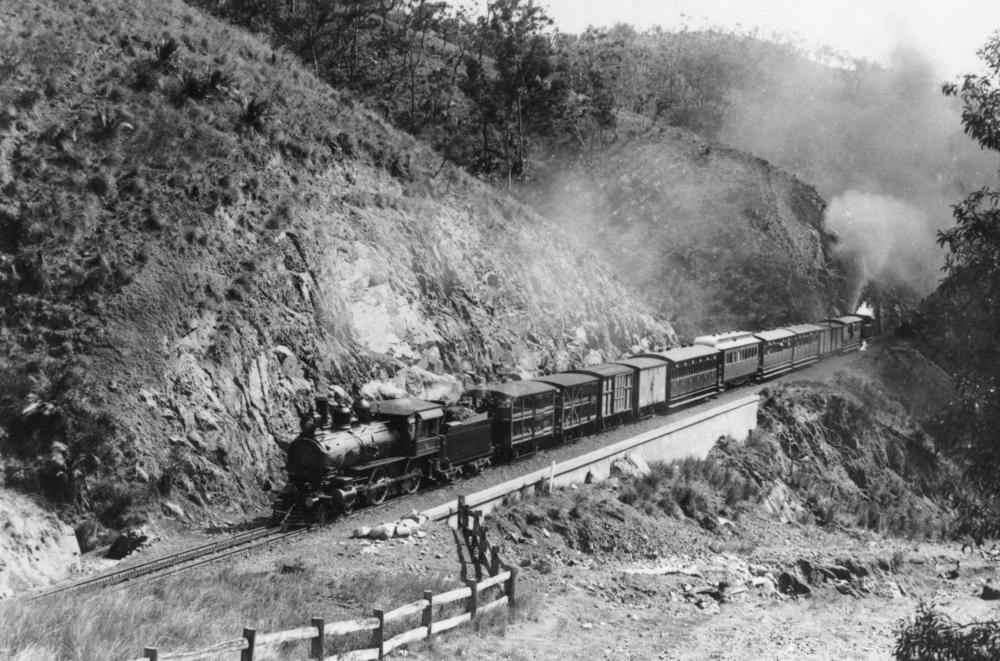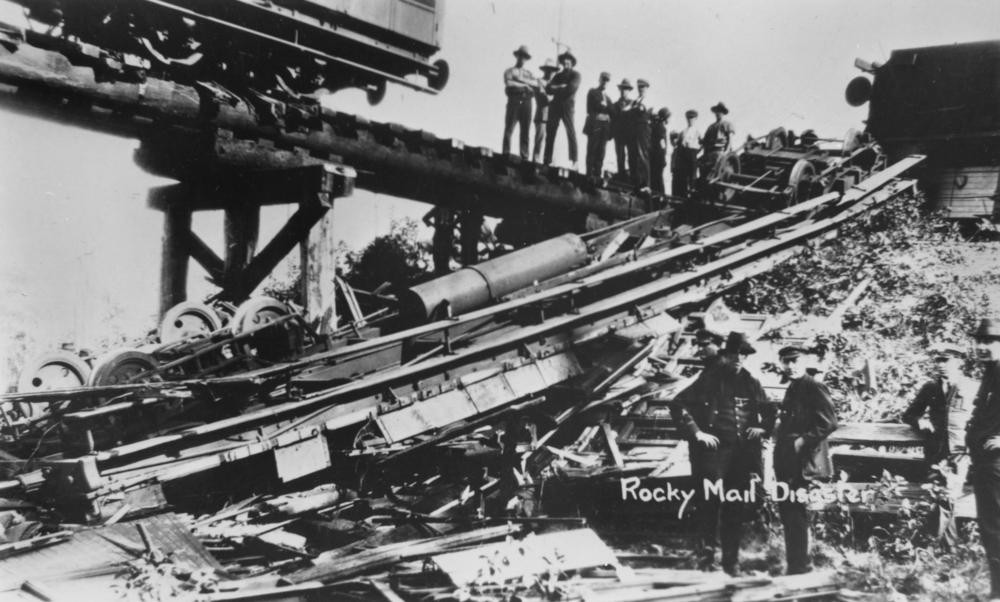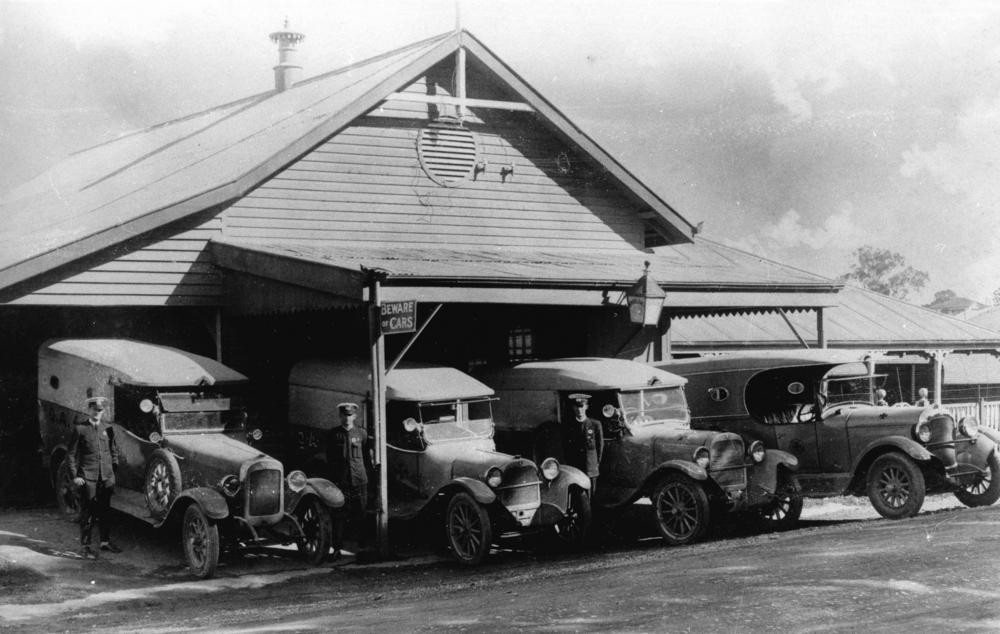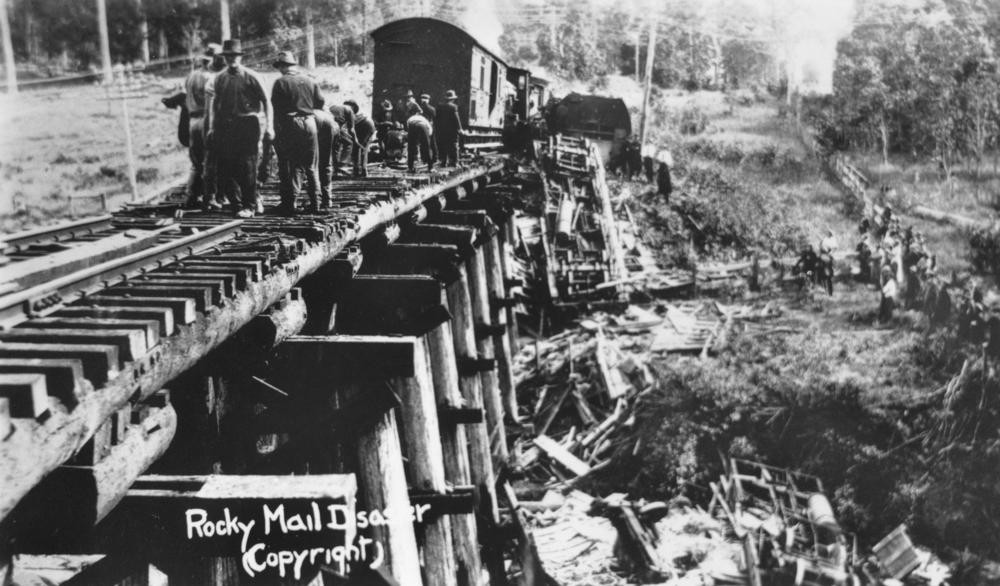FRIGHTFUL RAILWAY ACCIDENT
MOST SERIOUS IN QUEENSLAND.
Disaster to Northern Mail
A disastrous railway accident, the worst in the history of the Queensland railways, occurred at an early hour this morning to the Rockhampton mail train which left Brisbane last night. The smash took place at about 2 o'clock on a bridge across Traveston Creek, about thirteen miles on the Brisbane side of Gympie. Nine were killed and over fifty injured.
So begins a report in the Maryborough Chronicle, Wide Bay and Burnett Advertiser on 10 June 1925. The accident which occurred 90 years ago on the 9th of June, 1925 is the second worst accident in the 150 year history of the Queensland railways, after the Camp Mountain disaster 0f 1947 which left fourteen dead after an excursion train derailed. These serious accidents should not detract from an enviable safety record which has seen fewer than one fatality for every two years of the 150 years that railways have been running in Queensland.
The Rockhampton Mail first ran in 1904 after completion of the rail link to Gladstone which had been resisted by the citizens of Rockhampton for some forty years. Rockhampton already possessed a railway line inland to Longreach and a line from Brisbane to Gladstone was opened in 1897 but Rockhampton's civic leaders feared that they would lose considerable trade to Gladstone's superior port and passengers had to make do with an overnight steamer service from Gladstone to Rockhampton until the resistance was overcome and the rail link was completed in December 1903. The Rockhampton Mail started with three trains per week in 1904 but by 1914 the service had expanded to six days a week. The train journey from Brisbane took eighteen hours.

Rockhampton mail train ascending the Razorback near Mt. Morgan 1910
The mail train that met with disaster in 1925 was considerably larger than the 1910 train seen here. The Maryborough Chronicle article states that the Rockhampton Mail usually carried between 200 and 300 passengers and describes the makeup of the train.
The mail train, which met disaster, consisted of two engines, three first class sleepers, one second class sleeper, two first class carriages, and two second class carriages, a composite carriage, a goods waggon, break van and travelling post office van. Neither of the engines was derailed.
It was the 'goods waggon' or luggage van that was the cause of the accident as described in a detailed article in the Brisbane Courier.
The train comprised some 12 coaches, hauled by two engines. At the rear were the luggage waggon and guard's van. It is surmised that the luggage van became derailed, and was dragged along off the line for about a mile and a half. The fact that the van was off the line was not noticed, the train going along as if nothing had happened. Four bridges were crossed without further mishap, but at the fifth, known as tho 96-Mile Bridge tragedy was awaiting. It is amazing that the luggage waggon remained upright till then, though the permanent way, as it was traversed, bore emphatic signs of its erratic career all along the route sleepers being cut and splintered, and it is miraculous that disaster was not experienced earlier.
At this ill-fated bridge, however, the journey came to its sensational end. Bumping and jolting along, the luggage waggon at last plunged from the bridge to the ground, 35ft. below, dragging with it the preceding composite coach, which consisted of first and second class compartments. The guard had a marvellous escape from death, the coupling between the luggage waggon and his van breaking, the guard's van being left on the bridge. The coupling between the composite coach and the one immediately ahead held fast, and this coach was dragged from the rails and was flung on to the side of the embankment. Terrible scenes were witnessed in the darkness as the imprisoned passengers struggled for freedom.
The chief injury and loss of life occurred in the composite coach, which was pulled from the bridge by the luggage van. These were both smashed practically to matchwood, and the scenes in the darkness were harrowing. Instances of great coolness were observed, however, and one story is told of a commercial traveller who coolly sought for his sample bag amid the ruins. In the car which was dragged off the bridge it is said that only two escaped uninjured.

Rocky Mail rail disaster at Traveston 1925
Aid was first provided by passengers from the undamaged parts of the train but a train was soon dispatched from Gympie and a breakdown train was sent from Brisbane with the Railways Commissioner and other officials on board as well as a number of doctors.
Those who first answered the cries of the injured gazed upon a harrowing sight. Passengers from the front portion of the train quickly rendered assistance to the injured, but it was not until the arrival of the doctors and Ambulance from Gympie that any method and substantial relief was imparted. All worked heroically, and the Ambulance men were accorded most valuable aid in the work of bearing away the injured. Many unforgettable scenes were witnessed. In one place a man lay unconscious, all twisted, as if his back was broken. In another, an unfortunate woman's body was seen crushed in a lavatory compartment among the debris of that part of the carriage. The carriages were on their heads with the wheels in the air, and to rescue the injured beneath the debris the lifting jacks from the engine had to be used in order to raise the heavy iron work. The fear of the rescuers was that the wreckage would catch fire, but this was averted.

Gympie Ambulance Centre at Crown Road Gympie ca. 1926
The doctors and ambulance bearers quickly set to work, and before long it was ascertained that nine persons had been killed and 48 injured, but a great number of these proceeded on their journey. The engine and the front portion of the train was able to come on to Gympie, bringing the injured, as well as the passengers. Dr. Kelly returned with the train, in charge of the injured. Upon arrival in Gympie, the railway refreshment manager (Mr. Ashdown), acting under instructions from the Commissioner, provided all with a warm meal,and gave attention to those suffering from minor injuries. The bodies of the dead were brought in at about 7.30 a.m., and removed to the Gympie Hospital morgue. ... Every effort was put forth to help the sufferers and with the aid of all the available ambulances and motors the injured persons were taken to the Gympie Hospital.

Workers repairing the damaged railway track at the Rocky Mail disaster near Traveston 1925
A Court of Inquiry investigated the accident but could not identify the cause of the derailment with certainty, however some changes were made to railway operations as a result. Particularly, the use of goods wagons on mail trains was restricted to approved vehicles and baggage cars were built specially for use on passenger trains.
The 150 year history of Queensland's railways will be the subject of a lively discussion in A night in the JOL on Tuesday 16th June 2015 when Greg Hallam, Historian at Queensland Rail and Dr Geraldine Mate, Senior Curator, Transport and Energy at The Workshops Rail Museum will join Ian Townsend from ABC Radio National in the John Oxley Library.
Comments
Your email address will not be published.
We welcome relevant, respectful comments.